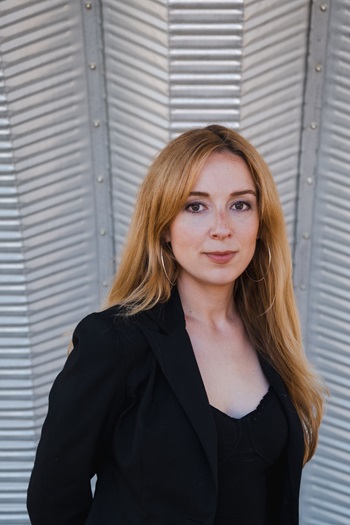
And So On
Contributor’s Marginalia: Jess Smith responding to Jehanne Dubrow’s “‘Tragedy, Ecstasy, Doom, and So On'”
Mark Rothko wrote that he considered himself a “mythmaker” and proclaimed that “the exhilarated tragic experience is for me the only source of art.” The most tragic moment of Jehanne Dubrow’s “‘Tragedy, Ecstasy, Doom, and So On’” occurs at the stanza break, when the speaker experiences Rothko’s later paintings’ “bleak descent / to shadow…like a tomb // sealed shut.” In this moment, Dubrow animates the silent father, moving through the retrospective with his child. The two of them march toward some understanding, hoping that beauty might save them or help them say what they haven’t said. Everything unspoken between father and adult child resembles what goes unspoken between art and viewer, between sky and mortal. The “thousand subtleties” of intuitive communication. The dream-state of impending loss.
↔
A letter to a writer. A poem to a father. A poem for a painter. Epistolary title. Ekphrasis as epistolary ecstasy. Poem as devotional. Poem as imitation. Rectangular regions of color. Rectangular regions of language. Father as mythmaker. An octave. A sestet. A sonnet. A crowded museum. A retrospective. Gentle, elegiac rhyme. Fame and its tragedies. Gray sky. Anxious creature. Aching flowers. And so on.
↔

A question that arises from Dubrow’s sonnet: Into what gray sky does our speaker emerge? A reader can’t help but imagine the steps of the museum, the empty, petal-strewn street. The National Gallery of Art has the largest public collection of Rothkos. The Tate has nine. The Rothko Chapel in Houston has fourteen. The Harvard Murals faded so much over time that they had to be replaced (“conserved”) with digital projection, a practice which the Harvard Art Museum said had the secondary goal of “encouraging study and debate of the technology.”
↔
My friend Chen and I used to joke that every poem has one subject, and that subject is that we’re all going to die. The joke of young poets, but also a recognition of the natural order of the world, over which we have no power. It is not uncommon to consider poetry a fortification against grief, poetry as giving shape to formless dread. I’ve long admired the tender confrontations of Dubrow’s formal attentions, including in her other poem in this issue, “Conchology,” whose shape mimics that of a spine, wherein she writes “What beautiful forms a body makes / to guard itself…”
↔

In a famous episode of Mad Men, “The Golden Violin,” Bert Cooper acquires a Rothko to display in his office. When Cooper’s employees sneak into his office to see the painting, and speculate on its cost, secretary Jane Siegel describes it as “smudgy squares.” Simpler to ignore the saturation, the “liquid hues” of tragedy, ecstasy, doom, and so on. Dubrow’s precision in both “Conchology” and “‘Tragedy, Ecstasy, Doom, and So On’” is suffused with the desire to reveal without acknowledging. There is relief in the meticulousness of her form, as if Dubrow is saying that even the most carefully layered piece of art cannot save us.
